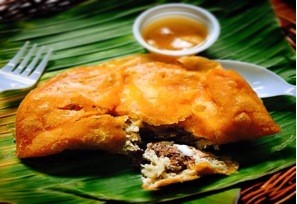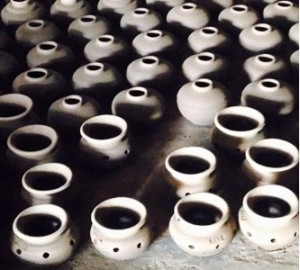TEACHERS’ WALKABOUT: The 2015 National Folkdance Workshop-Of Passion and Culture
Led by the Philippine Folkdance Society, this year’s National Folk Dance Workshop was held in Vigan City, Ilocos Sur. There were over 700 delegates from all over the Philippines, majority of which came from the host region, NCR, and Mindanao. The Vigan Convention Center served as our playground for five days. It was a time of building new friendships and renewing old ones. It was also a time of deepening our roots as Filipinos through dance.
The program gave prominence to old and new dances from the northern to southern parts of the Philippines. We rekindled the story of Maria Clara through dances like Putritos and Cariñosa, celebrated festivals through Sayaw sa Bangko and Engañosa, and more. What made us even more excited were the new dance researches that were shared to us by the passionate mentors we met during the workshop. Their journey towards uncovering the rich culture and heritage of the Philippines through dance is inspiring and we just cannot wait to share this to the community. We have learned innovative ways of deepening the cultural facet of our lessons and we are very grateful to have met passionate people in the field.
Apart from the dance training, we were also given the chance to witness the story, creativity, and spices of Ilocos. The Ilokano Folk dance troupe shared the story about how the Ilokanas used to hold knives and bolos before the Spaniards came. Ilokanas are not meant to be just house helpers because they are strong and courageous. They also portrayed the life of Gabriela Silang who was a revolutionary leader during the time of the Spanish occupation in Ilocos. More than the presentation, it was the sheer recognition of their past that rocked me to my core. Perhaps if the Filipinos, as one, will have a sense of our shared pain, we too can pass on such powerful message to the next generation.
One of the things we enjoyed very much about Vigan is their cuisine. Bagnet, Vigan longganisa, and Vigan Empanada were among the sumptuous food that we enjoyed. Their innovative mix of putting Bagnet as part of a pizza and pakbet recipe is a perfect fit. The Vigan empanada was a sure treat as well. It was not salty or oily, and the wrap was as crisp as taco shells. It is no wonder that the Bigueños are very proud of owning and promoting their local dishes.
The organizers also gave us a free half day to explore the city on our own. There were optional tours, but we opted to just go around by ourselves together with a colleague from Tarlac. We visited the Buridek Museum where photos of different Bigueño families from across the generations were displayed and their common ways were explained and shared. We also tried molding our own clay pots at the Paburnayan. Clay pots, locally known as Burnay, are sturdy jars that date back to pre-colonial times when they served as storage for food, drinks, salt, basi or native wine, and many more. As easy as it may look on pictures, it was difficult to mold the pots by hand as it requires a mix of gentleness and firm grip. We also visited the old provincial jail where we were enlightened about the story of the Basi Revolt. It is just saddening that the in-training tour guides did not see and understand that the writing about the Basi Revolt was degrading for the Ilocanos.
Putting all these together, I guess the experience was more than just the dances and teaching methods that we have learned. More than that, it was actually hearing first hand these people’s stories that made so much impact to us. It was a very enriching and empowering experience which we wish to impart to the community, especially to our students – to be aware of our deep and rich heritage, to be proud of innate Filipino talents, and to be bearers of culture and tradition so that it may be passed on to the younger generation.

Photos and sharing by T. Hannah Giselle “Gee” Quitco




